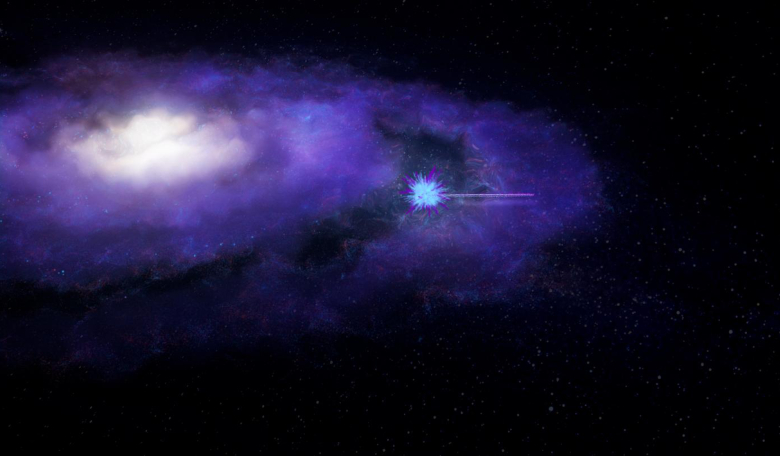An Australian-led team of scientists have found the Universe’s “missing matter” ending a search that began over 20 years ago, and the techniques used to find it involves another phenomena that still remains a big mystery to astronomers.
Astronomers have known for some time that something is amiss with the matter content of the Universe. When scientists tallied up how much baryonic matter – matter such as protons and neutrons, the stuff stars, planets and even black holes are made of – should exist after the Big Bang, it didn’t fit with their observations of the shapes, distributions, and movements of galaxies spread throughout the cosmos.
From this conundrum came the idea of dark matter, an as of yet unknown type of matter that makes up most of the material of the Universe.
But even when this mysterious matter was applied to the equations, it still meant that as much as 30–40 percent of visible matter was ‘missing’ in the local Universe.
So where was it? Provided that the law of conservation of mass, which states that mass in an isolated system is neither created nor destroyed was correct, then either many, many calculations were wrong (unlikely) or the matter was hiding in plain sight somewhere waiting to be found (more likely).
Over the years computer simulations predicted that "the WHIM”, short for "warm-hot intergalactic medium" which consisted of a hot and tenuous filamentary gas between galaxies could be the potential hiding place of the missing matter.
Tentative detections of the WHIM surfaced from time to time, but being so faint and diffuse it was hard to detect the matter with absolute certainty with available telescopes at the time.
Then, in 2007 the search took an unexpected turn when astronomers discovered a new cosmological phenomenon called a fast radio burst (FRB).
These highly energetic pulses of radio emission appear to come from random directions in the sky and last for just milliseconds.
Astronomers still don't know what creates them, but what they do know is that when these bursts of radiation pass through diffuse gasses they get spread out by the missing matter in the same way that you see the colours of sunlight being separated in a prism, says Associate Professor Macquart Jean-Pierre Macquart, from the Curtin University node of the International Centre for Radio Astronomy Research (ICRAR), who headed this new research.
The effect is known as dispersion and it is incredibly small. But by the time an FRB has travelled millions or billions of light-years to reach Earth, it has a notable effect on the arrival time of the radiation; longer wavelengths arrive nearly a second later than the shorter wavelengths.
Using fast radio bursts as "cosmic weigh stations”, Macquart and colleagues have been able to determine the density of the Universe by measuring the distances to enough fast radio bursts.
"We only needed six to find this missing matter,” says Macquart. Adding that it was equivalent to “only one or two atoms in a room the size of an average office."
This is not the first time that astronomers have tried to use FRBs to search for the missing matter however and a previous attempt was foiled by a misidentification of an FRB. This time around, Macquart and colleagues have had more success thanks to the resolving power of CSIRO's Australian Square Kilometre Array Pathfinder (ASKAP) radio telescope, which has a wide field of view about 60 times the size of the full Moon.
"This means that we can catch the bursts with relative ease and then pinpoint locations to their host galaxies with incredible precision,” says Associate Professor Ryan Shannon, a co-author from Swinburne University of Technology.
"When the burst arrives at the telescope, it records a live action replay within a fraction of a second," said Dr Keith Bannister from Australia's national science agency, CSIRO, who designed the pulse capture system used in this research.
"This enables the precision to determine the location of the fast radio burst to the width of a human hair held 200 metres away," he said.
Measuring how far away a FRB is and how the burst spreads out as it travels through the Universe, has enabled the team to independently confirm that their calculations are consistent with values derived from the cosmic microwave background and from Big Bang nucleosynthesis.
However it still doesn’t help determine what the composition of the matter is that the FRB’s passed through.
Most theories point to it being atomic hydrogen or helium in a highly ionised state, but pinpointing that information might have to wait until the Square Kilometre Array (SKA) telescope is fully up and running.
When it is, the SKA could observe large numbers of fast radio bursts, giving astronomers greater capability to study the previously invisible structure in the Universe.
If you've enjoyed reading this article, please consider subscribing to ROOM Space Journal to gain immediate and full access to the latest magazine feature articles and receive your own print and/or digital copies of the quarterly ROOM magazine delivered electronically or direct to your door.











